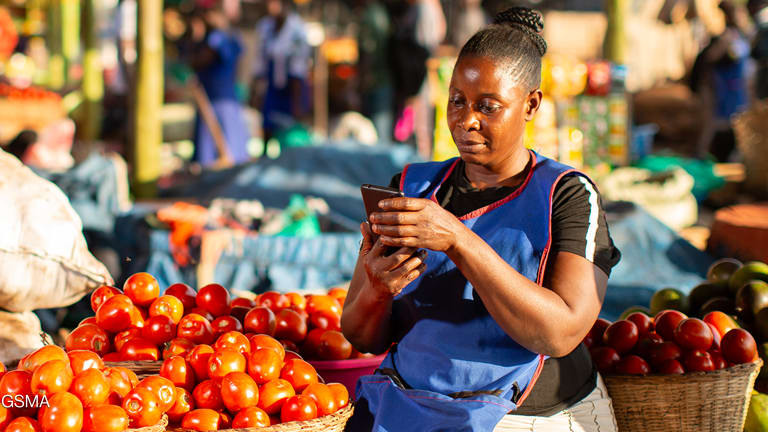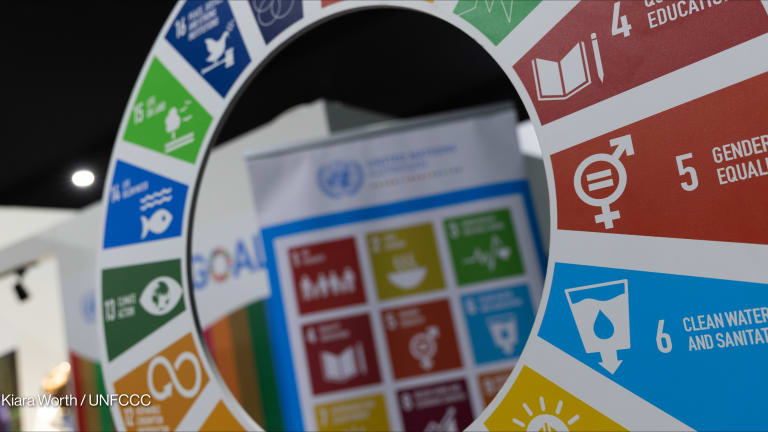
Whether it is access to health care, education, or financial services, mobile internet provides access to critical information and services, supporting livelihoods and driving economic growth. Mobile is the primary — and often only — way people access the internet, and mobile internet adoption continues to increase. 4.6 billion people — 57% of the world’s population — are currently using mobile internet on their own devices.
However, this also means that despite significant progress, 3.45 billion people worldwide remain unconnected and are being left behind in our increasingly digital world. The latest data in the GSMA’s “State of Mobile Internet Connectivity Report 2024” shows that growth in mobile internet connectivity has slowed in the past two years compared to previous years, and significant digital divides persist. Those who are digitally excluded are more likely to be lower-income, less educated, rural, women, or persons with disabilities.
More efforts are needed to unlock the significant socioeconomic benefits that ensuring universal internet access and usage can bring to individuals, communities, and economies. With the vast majority — almost 90% — of the unconnected living in areas covered by a mobile broadband network, addressing this usage gap is crucial to driving digital inclusion.
Closing the usage gap is estimated to add $3.5 trillion in total additional gross domestic product during 2023-2030, with 90% of this impact benefiting low- and middle-income countries. Just over $1.3 trillion in total additional GDP over the period would come from closing the gender gap in mobile internet adoption across LMICs.
The state of mobile internet connectivity
Almost everyone — 96% of the global population — is covered by mobile broadband. The remaining 4%, around 350 million people, are the hardest to reach. The coverage gap predominantly exists in rural, low-income, and sparsely populated areas — often less developed, landlocked, or small island developing states. An estimated $418 billion in investment is needed to build the infrastructure required to achieve universal mobile internet access.
Far more significant, however, is the usage gap. 3.1 billion people — 39% of the global population — who live within mobile broadband coverage do not use it. The usage gap is nine times the size of the coverage gap. Critically, two-thirds of those who are not using mobile internet, despite living in areas where there is broadband coverage, do not yet own a mobile phone.
It is essential not only to ensure that people can get online but also to provide meaningful connectivity, enabling them to use the internet effectively to meet their life needs. While most mobile internet users use it every day, usage is often limited to only one or two activities, and many say they want to use it more. In fact, across the survey countries, an average of 43% of mobile internet users reported wanting to use it more.
The barriers to digital inclusion
Barriers such as affordability, particularly of handsets, and literacy and skills, continue to hinder mobile internet adoption and use. In LMICs, where most of the unconnected live, an entry-level internet-enabled device costs 18% of the average monthly income, and 51% for the lowest-income 20%. In sub-Saharan Africa, which accounts for a quarter of the global unconnected population, the lowest-income 20% would need to spend 99% of their average monthly income to afford such a device.
In addition, while most people worldwide now access the internet using 4G or 5G smartphones, 1 in 5 mobile internet users still rely on 3G devices or feature phones. This share increases to more than one-third in Latin America and the Caribbean, and the Middle East and North Africa, and almost two-thirds in sub-Saharan Africa, limiting the range and depth of online and digital experience among users.
A lack of literacy and digital skills ranked the second-most reported barrier to mobile internet adoption among those aware of mobile internet and is the top barrier across Asian countries. In several countries surveyed for the report, a significant portion of people were not even aware of mobile internet. Safety and security concerns, lack of relevant content and services, connectivity experiences, and social norms also impact people’s ability to adopt and use mobile internet.
A collaborative effort for true digital inclusion
The digital divide will not close on its own. Targeted, informed action is required by all stakeholders working together to ensure people can access and use mobile internet, and that underserved people are not increasingly left behind. This includes not just supporting investments in infrastructure, but also working together on strategies that address the barriers preventing people from adopting and using the internet and the underlying socioeconomic disparities that drive the usage gap.
This could include handset financing initiatives that lower the upfront cost of a device for men and women, alongside digital skills training that provides them with the skills to confidently use the internet to meet their life needs and keep themselves safe while doing so. These could be coupled with awareness campaigns that highlight different mobile internet use cases that are relevant and useful for users to increase customers’ understanding of what the internet can be used for and how it can benefit their lives.
By taking concrete actions to address the needs and barriers people face to accessing and using mobile internet, it is possible to reduce the digital divide. We have seen this through the GSMA Connected Women Commitment initiative where more than 50 mobile operators have made formal commitments with targets to accelerate women’s digital and financial inclusion.
They have taken action to address the barriers women face and have successfully reached over 70 million women since 2016. Our Mobile Internet Skills Training Toolkit, or MISTT, has also been used by partners in more than 40 countries to provide over 75 million people with the basic skills they need to use mobile internet. But more investment and targeted action are needed to tackle the barriers, address the digital divide, and achieve truly inclusive digital growth.
Ultimately, digital inclusion is not just about technology. It’s about enabling people to participate fully in today’s digital society, unlocking individual potential, and boosting collective economic resilience. Connecting the unconnected is more than a milestone; it’s a necessary evolution toward a more inclusive world. By harnessing mobile internet’s potential for every individual, we can drive sustainable progress and economic opportunity for billions.
Download The State of Mobile Internet Connectivity Report 2024 for the latest trends and insights in global connectivity: www.gsma.com/r/somic
Join the GSMA’s upcoming webinar on Thursday, Dec. 12, to hear the authors share the key findings from this year’s report, followed by fireside discussions with CEOs from Dialog Axiata Sri Lanka and MTN Rwanda: https://www.linkedin.com/events/7261694733385633793/comments/
The GSMA’s Connected Society program is currently funded by U.K. international development from the U.K. government and by the Swedish International Development Cooperation Agency, or SIDA, and is supported by the GSMA and its members.








